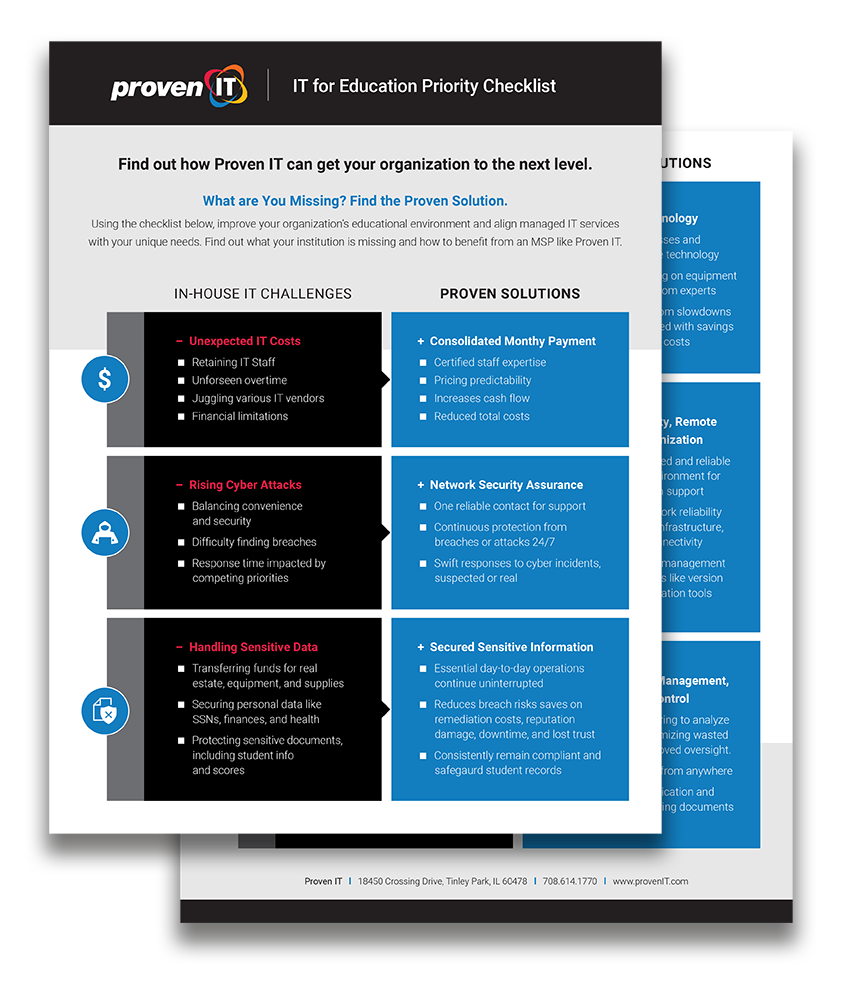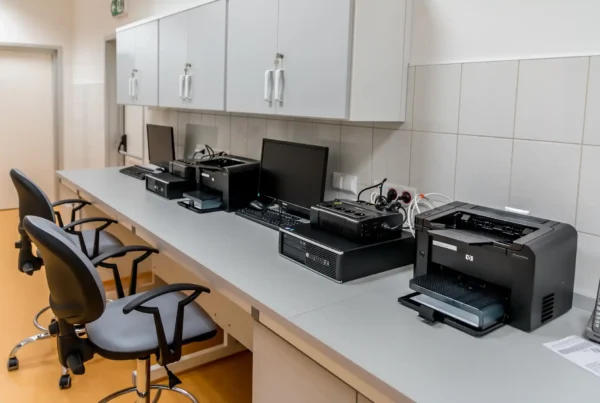Classrooms today have gone digital. Whether it’s interactive video lessons, cloud-based collaboration tools, or administrators managing attendance and records online, everything depends on one thing: a fast, reliable, and secure network.
However, the quality of your school’s internet connection can make or break the learning experience. When the network lags, education suffers. That’s why more schools are turning to managed IT services for education, not just to stay online, but to stay ahead of the curve.
One key component of these services is managed network services, which ensure that your school’s connectivity is optimized, monitored, and supported 24/7. So, if you’re looking for IT support for schools to simplify your infrastructure, enhance digital instruction, and empower both teachers and students, investing in managed IT services for education is a smart and strategic choice.
Let’s explore how a dependable, secure, and high-speed network directly enhances learning and how managed network services provide a seamless solution to keep your school running efficiently!
The Hidden Impact of Poor Connectivity in Schools
With schools embracing hybrid models, remote learners joining from home, and teachers managing digital assessments, uninterrupted connectivity becomes the baseline for classroom success. Every minute of downtime disrupts more than just browsing. Poor connectivity disrupts lessons and administrative work.
In schools where bandwidth is stretched thin or aging infrastructure struggles to keep up, this has become a daily reality. As of late 2023, 26% of U.S. school districts still do not meet the Federal Communications Commission’s (FCC) recommended bandwidth goal of 1 Mbps per student. This equates to 3,330 of the nation’s 12,911 school districts still lacking adequate internet access for digital learning.
Here’s how poor connectivity affects daily operations: Here’s how poor connectivity affects daily operations in schools:
1. Lesson Interruptions
When a school’s network falters, so does the flow of learning. Buffering videos, frozen screens, and dropped virtual lessons can disrupt a teacher’s plan and waste valuable instructional time. Teachers are forced to improvise or delay learning objectives, while students lose focus and overall engagement.
Over time, these delays erode instructional minutes, limit the use of edtech tools, and leave both educators and students feeling frustrated and disengaged. For schools integrating digital learning tools into everyday instruction, poor connectivity doesn’t just slow things down; it reduces the effectiveness of digital tools meant to enhance the classroom experience.
2. Administrative Delays
Administrative tasks such as tracking attendance, updating student records, or managing grades are increasingly done online. When the network is unreliable, these critical processes are delayed, causing frustration for staff and creating backlogs in essential operations. Without smooth connectivity, administrators spend more time troubleshooting issues rather than focusing on the core tasks that keep schools running efficiently.
3. Widening the Digital Divide
Students who rely on school-issued devices and in-building internet access are hit hardest when connectivity fails. For many, school is the only place where they can access the internet for learning. When the network is slow or unreliable, these students miss out on valuable educational opportunities such as online research or digital assignments.
A study conducted by Common Sense Media and the Boston Consulting Group found that about 60% of K–12 students cannot afford digital access. This highlights the vulnerability of students who already face significant barriers to reliable internet at home. As a result, when the school’s network fails, it further deepens the digital divide, disadvantaging learners who are already struggling with access to technology outside of school.
Don’t Let Poor Connectivity Hold Your School Back!
Schedule a 30-minute discovery call to see how Proven IT can help enhance your school’s network reliability and ensure seamless digital learning for students and teachers alike!

The Role of Managed IT Services for Education
So, how do schools ensure dependable internet across classrooms, labs, offices, and common areas? The answer lies in managed IT services for education. These services provide schools with a comprehensive solution to not only maintain but also optimize their IT infrastructure.
With managed network services as a core offering, schools can benefit from continuous monitoring, proactive network management, and enhanced security, ensuring seamless connectivity for all users. This support minimizes disruptions, ensuring that both teachers and students can engage with digital tools without the frustration of slow or unreliable internet connections.
Managed Network Services: The Key to Seamless Learning
Managed network services take a proactive and smart approach to optimizing school connectivity. These are outsourced IT solutions that handle all aspects of a school’s network, from installation and configuration to continuous performance tracking and issue resolution. Here’s how they work, and how they directly support student learning:
Improved Learning Experience
Managed network services ensure that your students and teachers are always connected to high-quality, uninterrupted internet. With faster and more reliable internet, online learning sessions run smoothly, preventing delays during live video lessons and digital assessments.
The ability to access educational resources without experiencing connectivity issues ensures that the learning experience remains consistent, enabling both students and teachers to engage with digital tools seamlessly and without frustration.
Increased Network Reliability
Managed network services provide stability by minimizing outages and ensuring faster recovery times. This guarantees continuous access to educational tools and platforms without prolonged downtime.
Even during peak usage periods, such as standardized testing or remote learning sessions, having managed IT services for education maintains consistent performance, enabling your network to handle high traffic loads without compromising the quality of access for students and staff.
Reduced Burden on School IT Staff
Most school IT departments are small and stretched thin. They manage everything from classroom tech setup to district-wide systems, leaving little time for real-time network diagnostics. With managed IT services for education, the responsibility for network maintenance, security, and performance is seamlessly handled by external experts, allowing your school staff to focus on other priorities.
Expert IT support for schools also ensures any technical issues are addressed swiftly and efficiently, minimizing the need for internal resources to troubleshoot problems and resolve technical glitches. With proactive IT support for schools, you can also leverage the expertise of experienced IT professionals who are up-to-date on the latest technology trends and security standards.
Cost Savings and Predictable Budgeting
Outsourcing network management offers you significant cost savings. Your school no longer needs to invest in full-time, in-house network specialists or deal with the turnover costs associated with IT staff.
With a fixed, predictable monthly cost, your school can better manage its budgets and avoid unexpected expenses that often arise with ad hoc IT solutions. This stable budgeting enables schools to allocate resources to other areas that directly impact student learning and development.
Future-Proofed Network Infrastructure
As your school’s digital infrastructure grows, managed IT services for education keep your network up-to-date with the latest technology. These services offer continuous maintenance and upgrades to ensure your school is always prepared for evolving educational needs.
Managed IT services for education also offer scalable solutions, meaning that as your student populations grow or new technology is introduced, your network can be easily adapted to handle increased demand. This scalability helps your school to stay ahead of the curve and be ready for future advancements in digital learning tools.
Stronger Community Trust
Investing in managed network services not only strengthens your school’s IT infrastructure but also enhances data security by minimizing vulnerabilities that come with outdated systems and inconsistent maintenance. This builds trust with parents and the broader community, especially those considering enrollment, by showing your school is committed to data protection and digital reliability.
In turn, this can boost your school’s reputation as a technologically competitive institution, generating more positive feedback and ultimately attracting more students.
If you’re looking to enhance your school’s technology infrastructure, our FREE Technology Solutions for Education Checklist can guide you in prioritizing and implementing the right solutions!

Start the Next School Year with Managed IT Services for Education!
When schools invest in reliable infrastructure, they empower teachers, simplify administration, and, most importantly, provide students with an uninterrupted path to success in the next school year and beyond. Forget about reactive fixes and patchwork IT. Proven IT delivers smart, proactive, and stress-free network solutions specifically designed for the education sector.
Reach out to us today to discover how our managed network services and IT support for schools can transform your digital environment from reactive to resilient!






